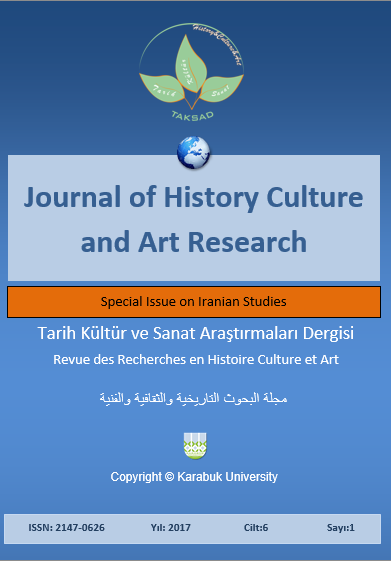Analyzing Spatial Factors in Crime-inducing Culture in Chaloos
DOI:
https://doi.org/10.7596/taksad.v6i1.755Keywords:
Urban space, Spatial differences, Crime-inducing culture, Chaloos.Abstract
Feelings of security in urban areas are one of the qualitative criteria of living space. With the rise in urbanization and increasing abnormal urban behavior, especially offenses, this issue has become of great importance. This study aims to identify and analyze the effects of spatial factors on crime-inducing culture in affluent and non-affluent neighborhoods of Chaloos. The method used in this study is analytical-descriptive and it is practical in terms of objective. In order to study and understand the status of physical-spatial structures of affluent and non-affluent neighborhoods in Chaloos, we used field study method. Data were collected through interview, notes taking and questionnaire. The results indicate that in affluent neighborhoods, all criteria components of spatial differences are above the mean (Mean=3), but in non-affluent neighborhoods, all components are lower than the mean. In addition, there is a significant relationship between criteria components of spatial differences and the formation of crime-inducing culture (except the diagnosis component) in the affluent and non-affluent neighborhoods.
References
Abdollahi Haghi, M. (2004). Crime prevention through urban planning, case study of theft in the city of Zanjan. MSc Thesis, University of Zanjan.
Bayat, A. (2000). From ‘Dangerous Classes’ to ‘Quiet Rebels’: Politics of the Urban Subaltern in the Global South. International sociology, 15(3), 533-557.
Carmona, C., Heath, T., Oc, T. & Tiesdell, S. (2003). Public Places and Urban Spaces: The Dimensions of Urban Design. London: Elsevier.
Cozens, P. M., Saville, G., & Hillier, D. (2005). Crime prevention through environmental design (CPTED): a review and modern bibliography. Property management, 23(5), 328-356.
Crowe, T. D. (2000). Crime prevention through environmental design: Applications of architectural design and space management concepts. Butterworth-Heinemann.
Dickens, C. (2004). Social reform and the empirical tradition in classic urban studies. Urban Theory and the Urban Experience: Encountering the City, 27.
Jacobs, J. (1961). The Death and Life of Great American Cities. New York: Vintage Books.
Lawson, B. (2006). How designers think: The design process demystified, (4th ed.). London: Elsevier.
Lynch, K. M. (1967). A Congreve gallery. London: Routledge.
Newman, G., Clarke, R. V. & Shoham, S. G. (1997). Rational choice and situational crime prevention. Aldershot: Dartmouth.
Pierre Maurer, M. & Allen, L. S. (1994). Urban spaces (design, implementation, management), translators: Hussein Rezai Mir Mojabi, Mohsen Rasuli. Tehran: Tehran Public and International Relations Department of Tehran Municipality.
Robinson, M. B. (2013). The theoretical development of “CPTED”: Twenty-five years of responses to C. Ray Jeffery. The criminology of criminal law, 8: 427-462.
Salingaros, N. A. (1999). Urban space and its information field. Journal of Urban Design, 4(1), 29-49.
Trancik, R. (1986). Finding lost space: theories of urban design. John Wiley & Sons.
Downloads
Published
How to Cite
Issue
Section
License
All papers licensed under Creative Commons 4.0 CC-BY.- Share — copy and redistribute the material in any medium or format
- Adapt — remix, transform, and build upon the material for any purpose, even commercially.
Under the following terms:
Attribution — You must give appropriate credit, provide a link to the license, and indicate if changes were made. You may do so in any reasonable manner, but not in any way that suggests the licensor endorses you or your use.
- No additional restrictions — You may not apply legal terms or technological measures that legally restrict others from doing anything the license permits.







